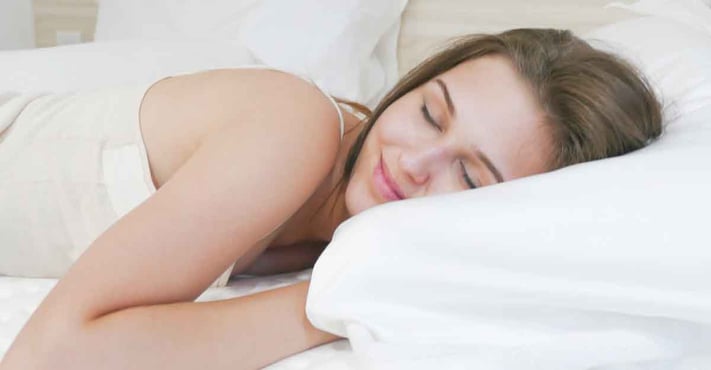
The key to a healthy life is sufficient sleep.
Do you often wake up in the middle of the night because you’re too hot or too cold?
If your answer was “yes,” that’s not a good thing.
Some people sweat throughout the night, but feel cold when the morning approaches. Others toss and turn restlessly. Everyone wishes that these occurrences would just go away so that they can get a good night’s sleep.
People spend one-third of their lives sleeping, but we often neglect sleep. Poor sleep not only affects the ability to concentrate, but also work performance and even the immune system, making people more susceptible to disease.
Sleep is the first line of defense against disease, and “body temperature” acts as the switch that affects immunity. Japanese doctor Yumi Ishihara found that immunity decreases by 30 percent for every 1-degree Celsius reduction in the body temperature. Modern lifestyles with reduced levels of physical activity have resulted in lower body temperatures compared to 50 years ago, giving viruses, bacteria, and cancer cells more opportunities to invade the body.
Sleep can be your strongest ally, or your most feared enemy. Sleeping well is a long-term guarantee of health.
How can you achieve good sleep? Wellcare has a few tips to help you get started.
The sleep environment is extremely important

People spend one-third of their lives sleeping, so a comfortable sleep environment is essential.
A comfortable environment is essential to good sleep. Good sleep must satisfy all five senses, while a comfortable environment depends on the room temperature, humidity level, furnishings, and bedding. It’s also necessary to understand how the two reliable sleep switches – the brain and body temperature – work in order to create the optimal sleep environment for you.
The five senses affecting sleep
1. Sight
Did you know that your bedroom color has an impact on the quantity of your sleep? A British study that looked at 2,000 homes found that blue, yellow, and green are the most sleep-inducing colors. Those sleeping in blue bedrooms slept an average of seven hours and 52 minutes per night, while those sleeping in yellow bedrooms slept seven hours and 40 minutes, and those sleeping in green bedrooms slept seven hours and 36 minutes.
The circadian biological clock regulates sleep and the pineal gland of the brain secretes melatonin. The amount is less during the day and more during the night to induce sleep. If you use electronic devices before bed, the blue light they emit will affect the body’s circadian rhythm and inhibit the secretion of melatonin. That’s why the U.S. National Sleep Foundation recommends that you stop using electronic devices at least 30 minutes before bed.
The eyelids can sense and be disturbed by even weak light, so you should also close your curtains and turn off all lights before going to bed.
2. Smell
Have you ever walked into your room after work, only to smell an unpleasant odor?
An odor may be the result of the accumulation of sweat, mold, smoke, or food. Not cleaning on a regular basis creates uncomfortable sensations. Therefore, keeping rooms clean and well-ventilated can eliminate the issues resulting from unpleasant odors.
Those who enjoy scents can consider aromatherapy. The right scent can induce sleep and improve your sleep experience. Many essential oils have a soothing and calming effect, such as lavender or jasmine.
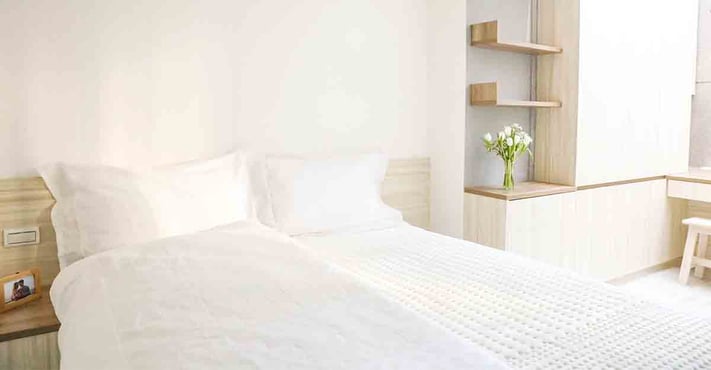
Clean and odorless rooms make recharging and resting easier.
3. Sound
A German study found that acoustically isolated rooms increase deep sleep by 16 to 34 minutes. Therefore, it’s important to ensure that bedroom noises are below 30 decibels, similar to the noise level of a library.
Many people use nature sound machines for sleep. These devices produce different sounds that cover up ambient noises that may interfere with sleep. Listening to music before sleeping is another great way to relax your mind and prepare it to sleep. Classical string-based music that was around 60 beats per minute causes the brain to synchronize your heart rate with the beat of the music.
4. Touch
People spend one-third of their lives sleeping. The quality of materials used for mattresses, bed sheets, and pillows affects the tactile experience, which in turn will affect the quality of sleep.
In a research published in 2008 shows that Merino wool bedding textiles are able to buffer temperature extremes and changes in humidity. These bedding textiles also transport more sweat away from skin as compared to synthetic fabrics and thereby aid quality sleep.
A 2015 study of 31 adults with chronic insomnia found that four-fifths preferred using weighted blankets because they found that they made it easier to fall asleep, prolonged the sleep time, and made them feel more refreshed the next morning.
Many people decide what bedding articles to buy depending on how thick, comfortable, and soft the materials feel. From this, it can be seen that touch is one of the most effective ways to improve sleep.
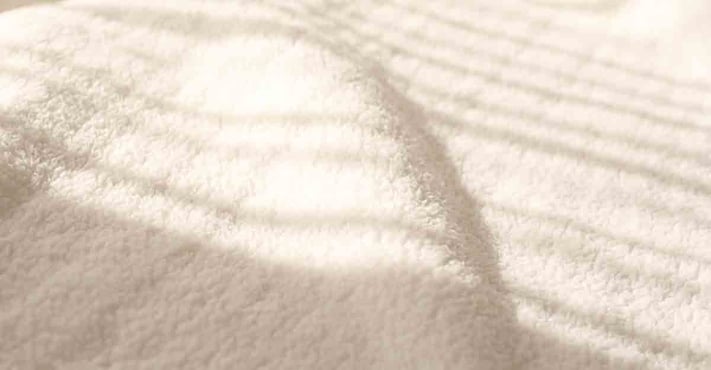
Choose comfortable materials for a good night’s sleep.
5. Taste
Try to avoid overeating and overdrinking before bed, as this can increase the burden on the digestive system. However, we can use a few light foods to induce sleep. You can have a hot drink to raise the body temperature, such as milk or chamomile tea. They can help you to relax. Tryptophan-rich bananas are another option to help prepare you for sleep.
Many people rely on alcohol to fall asleep. However, this can produce the opposite effect and cause people to sink into a vicious circle of not being able to sleep well. An American study concluded that using alcohol as a sleep aid is dangerous. In severe cases, frequent drinking can lead to alcohol dependence or alcoholism.
Invisible sleep killers
1. Temperature
The optimal room temperature for sleep is between 16 and 18 degrees Celsius or 60.8 to 64.4 degrees Fahrenheit. However, the ideal is still based on the season, the area of your home, your usual activities, and your temperature preference.
If there are infants or children in the room, the temperature should not be lower than 17.78 degrees Celsius or 64 degrees Fahrenheit. For elderly people prone to colds or hypothermia, the most comfortable temperature is between 20 and 22 degrees Celsius or 68 to 71.6 degrees Fahrenheit.
2. Humidity level
According to U.S. National Sleep Foundation, the ideal room humidity level for better sleep is between 30% -50%. The air within the range is moist enough for easy breathing, but dry enough to not feel oppressive.
An overly humid environment can cause the skin to feel hot and sweaty. It’s hard to fall asleep when your skin feels sticky. Some people will use dehumidifiers to maintain a dry and clean home environment. However, an overly dry environment causes the skin and respiratory system to dry up, resulting in itchy throats and hoarse voices and increasing the chances of catching a cold.
3. Air circulation
Maintaining good air circulation in indoor spaces is also very important. You can open windows and use air purifiers to ensure good air quality. People with respiratory issues need to pay special attention to the air circulation of their sleep environments.
Sleep switches: the brain and body temperature
The brain switch: monotony and routine
No work before bed! At the 2019 MEDICA Trade Fair in Germany, Wellcare surveyed businesspeople and found that everyone is aware that you shouldn’t use mobile phones and computers before bed, but are unable to resist answering any business correspondence that comes in. This makes it very difficult for the brain to immediately go to rest when it’s time for bed.
Dr. Seiji Nishino, director of the Sleep and Circadian Neurobiology Lab at Stanford University, says that people should allow the brain to enter a “monotonous” state before bed by not giving it any stimulation or thinking about anything. Brains love routine, so another option is to develop a bedtime routine to easily switch over to sleep mode.
Don’t overuse your brain before going to bed. Do things that help you to relax. If you like reading, reach for calming books, not heart-pounding murder mysteries. Establish a bedtime routine, such as taking a bath, changing into pajamas, listening to some music or white noise, or doing some simple stretching exercises at a certain time every night. All this can help you to sleep better.
The body temperature switch
Thermoregulatory processes have long been implicated in initiation of human sleep. Even a slight difference in temperature is enough to affect the quality of your sleep.
Body temperature is an important switch for sleep. It is divided into deep body temperature and surface body temperature. Deep body temperature is also called core body temperature, and changes along with the circadian rhythm. Body temperatures rise during the day and reach the highest point at 4 to 5 p.m. They fall at night when it’s time to sleep. Meanwhile, surface body temperature, which is the temperature of surface of the skin such as at the hands or feet, does the opposite.
Dr. Noshino writes in his book “The Stanford Method for Ultimate Sound Sleep” that there should be a difference of less than two degrees Celsius between the core body temperature and the surface body temperature of the distal and proximal parts. Raising the surface body temperature and lowering the core body temperature make it easier to fall asleep.
You can try soaking in a tub for 15 minutes in 40 degrees Celsius water 90 minutes before bed. For busy businesspeople, the recommendation is taking a shower 15 minutes before bed or soaking the feet to promote blood circulation and improve heat dissipation. Heating up these key areas will make sleep easier to achieve.
Appropriately adjusting the room temperature is also very important. During summer nights when the temperature and humidity level are too high, people won’t sweat easily, hindering the heat dissipation of the hands and feet and reducing the quality of sleep. If you have sleep issues, pay attention to the ambient temperature. Establishing a good bed climate can help you to sleep throughout the night.
What is Best Bed Climate?
Bed climate is also known as microclimate or sleep environment. According to an article in journal “Building and Environment,” bed climate is an essential determinant in creating thermal comfort condition during sleep. Wellcare therefore developed “BBC design,” which encompasses all the bed and bedroom elements that can assist or influence sleep, such as pillows, comforters, sheets, mattresses, electric blankets, foot warmers, and fragrances.
Imagine opening the door of your bedroom and being greeted by a neat and tidy space. A suitable temperature and humidity level plus fresh and clean air can help you to relax. Wellcare believes that the first step to immediate sleep is creating the best bed climate.
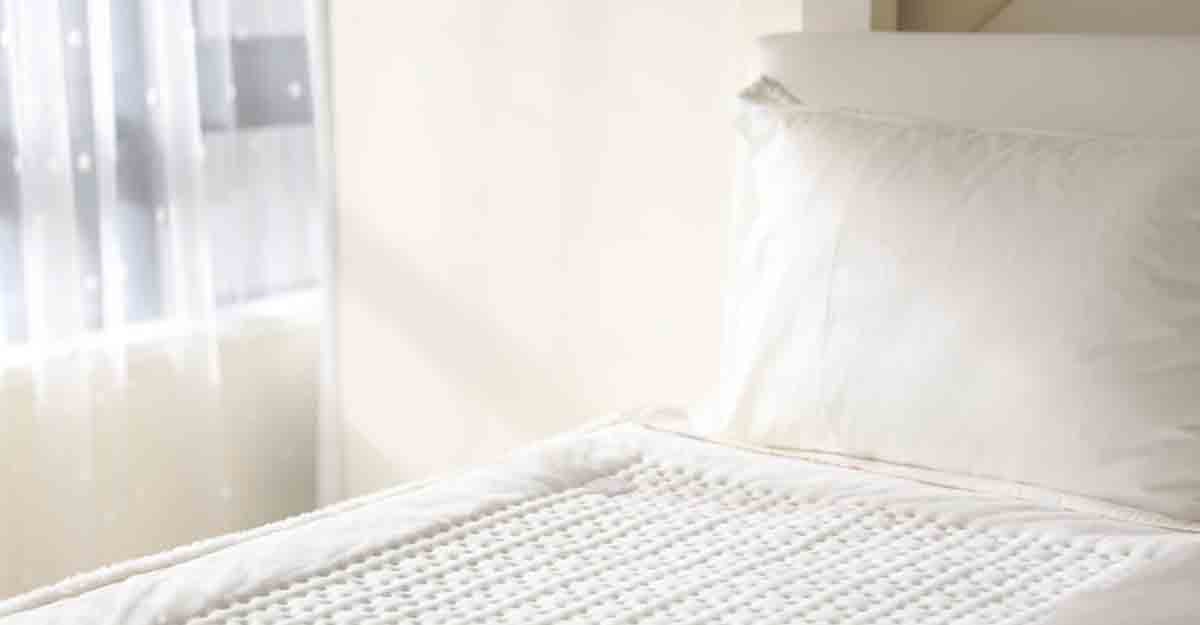
The first step towards a good night’s sleep is creating the BBC.
Why is BBC design important?
A National Sleep Foundation survey highlighted the importance of bedroom elements to a good night’s sleep. Eighty-seven percent of respondents agreed with the statement that they choose bedroom products that will help them to sleep better. You can see that creating the best bed climate is the key to good sleep!
The five most important bedroom elements for a quality sleep experience were found to be a comfortable mattress (93 percent), comfortable pillows (91 percent), a comfortable feel of sheets and bedding (86 percent), a quiet room (74 percent), and a dark room (73 percent).
At the 2019 MEDICA Trade Fair in Germany, Wellcare designed a Bingo card to ask visitors to share their sleep experience. We asked them the question, “Do you believe that improving your sleep environment can help you to sleep better?” Ninety-six percent of respondents agreed with the statement.
We can choose high-quality bedroom elements and control the ambient temperature, humidity level, lighting, and sounds, but it’s still hard to achieve the temperature, humidity level, and air circulation required for the best bed climate. That’s why Wellcare designed BBC and applied it to heated electric blankets (electric underblankets, electric overblankets, foot warmers, and cell shape heating pads), to give people a breathable, warm, natural, and comfortable experience.
Applying BBC design to sleep

To induce drowsiness, use an electric blanket to increase the bed temperature and raise the body temperature. This will narrow the gap between the core body temperature and surface body temperature.
I’m clearly exhausted, so why can’t I fall asleep?
When the weather is cold or when you’re feeling tired, you’ll want to get a good night’s sleep. However, you just can’t fall asleep, even if you count sheep, because your hands and feet are cold or your muscles are all tense.
For those people with a regular bedtime, the biological clock will increase the sleep pressure as the bedtime approaches. If the temperature of the hands and feet at this time is too low, there will be too much of a difference between the core body temperature and the surface body temperature, hindering people from sleeping even if they’re exhausted.
Wellcare’s electric blankets increase the bed temperature before bed, rapidly raising the distal and proximal surface temperature and accelerating heat dissipation, narrowing the gap with the core body temperature. This in turn relaxes the muscles and induces drowsiness.
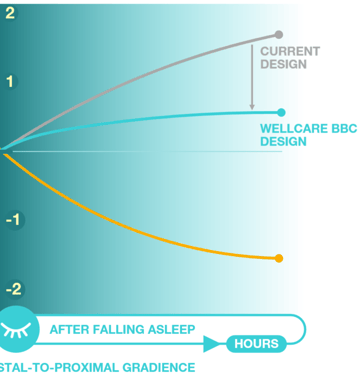 If electric blankets are not breathable and continuously heat the body, the body will sweat and heat will accumulate inside the blanket, which will then affect the quality of sleep.
If electric blankets are not breathable and continuously heat the body, the body will sweat and heat will accumulate inside the blanket, which will then affect the quality of sleep.
I’m half-asleep, half-awake throughout the entire night!
You spend the entire night tossing and turning. You finally fall asleep, but remain half-asleep and half-awake. You get up to go to the bathroom, and can’t fall back asleep once you return to bed. You wake up while it’s still dark outside. These are common sleep issues that many people suffer from.
After a person falls asleep, the surface temperature of the distal and proximal parts becomes equivalent and the movement of the limbs slows down. The heart rate becomes slower, the blood pressure comes down, and the core body temperature decreases. At this moment, the body only needs to maintain the minimum physical activity energy for sleep. However, if excess heat accumulates inside the blanket or the blanket temperature is too high, sleep will be adversely affected.
“The Stanford Method for Ultimate Sound Sleep” indicates that although electric blankets are used as a way to keep warm, a continuous source of heat will result in overheating. A medical advice column in American newspaper “The Spokesman-Review” offered the same warning, saying that creating a continuously heated environment may interfere with the body’s core body temperature and worsen the quality of sleep.
Heavy quilts and electric blankets with insufficient breathability can cause heat to accumulate and make it too stifling or too hot inside the blanket and keep you in a half-asleep, half-awake state.
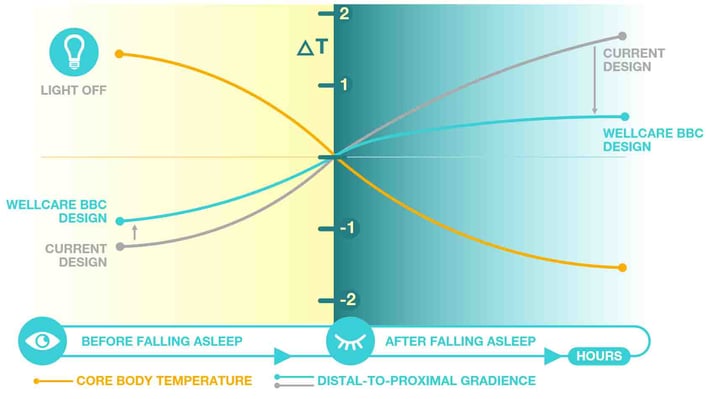
The key to falling asleep effortlessly is reducing the difference between the core body temperature and the surface body temperature to less than two degrees Celsius. Wellcare BBC Design offers electric blankets that can raise the surface body temperature to induce sleepiness. They were designed using innovative 4D DWF technology so that you won’t feel hot after you fall asleep and can get a refreshing night of good sleep.
Compared to other electric blankets that only offer warmth, Wellcare BBC Design products feature the breathable, warm, and natural characteristics of Wellcare 4D Dynamic Warmth Flow (DWF). The blankets adapt to changes in the nighttime core body temperature and use hundreds of circular holes to create a bed climate with a unique temperature, humidity level, and air circulation profile. The exceptional breathability ensures that heat won’t accumulate and dissipates excess heat to maintain the best bed climate within the blanket. This is the secret behind BBC Design.
BBC design + 4D DWF = Wellcare Electric Blanket!
When the innovative 4D DWF technology is combined with BBC Design, the result is greater than the sum of its parts. Strands of warmth are quickly and evenly transferred to the body though the unique, 3D circular holes; the use of different materials; the structure; the utilization of the properties of textiles; and a special welding technique. It provides 360 degrees warmth flow circulation and can be 150% more breathable than normal electric underblankets!
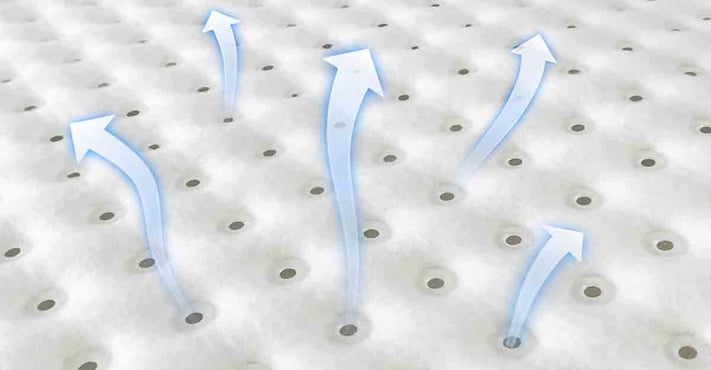
Products with 4D DWF technology can deliver warmth more efficiently to create a comfortable temperature around you. Provide 360 degrees warmth flow circulation and can be 150% more breathable than normal electric underblankets!
BBC Design means that when you lie down on a bed over an electric blanket and under a comforter, your surface body temperature will quickly ascend, narrowing the gap with the core body temperature. You’ll feel warm and sleepy. Wellcare’s electric blankets won’t cause any hot and stuffy discomfort from a continuous rise in temperature or a lack of circulation. Instead, they help you to enter a relaxed state of mind and prepare you for a good night’s sleep.
Wellcare’s electric blankets come in models with two-hour and eight-hour timers. If the weather is cold or the ambient humidity is high, use a blanket with a two-hour timer and snuggle up in bed. The tenseness will leave your muscles and you can relieve the fatigue accumulated during the day to fall fast asleep.
If you need to stay warm for longer or often wake up in the middle of the night because you’re too cold or too hot and find it hard to fall back asleep, then try a blanket with an eight-hour timer for a fresh, clean, and breathable bed climate the entire night that can improve sleep quality.
Wellcare electric blankets help to create the most comfortable bed climate. When you turn them on, the warm currents come into contact with the air and humidity of the body surface. They circulate and generate convection, creating a whole body thermal cycle and a bed climate that is fresh, clean, and breathable but not stifling hot. This helps to relieve fatigue and prepares you for a good night’s sleep.
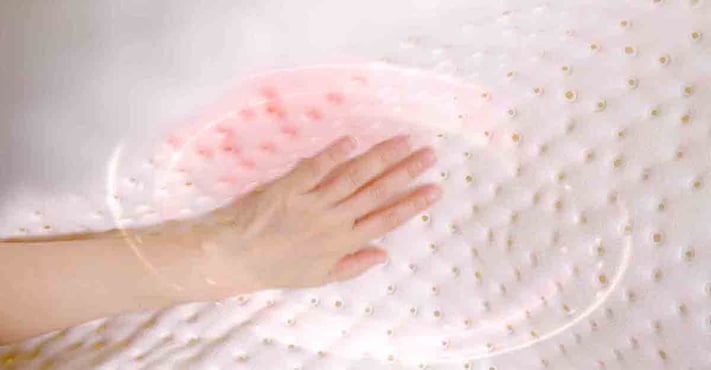
Wellcare Electric Blanket provides better warmth, comfort, and breathability.
Taking good care of yourself
It’s not your fault if you can’t sleep well. The more you worry about not sleeping well, the harder you’ll find it to fall asleep. If you relax your state of mind and face this issue positively, the situation will naturally improve.
An American study found that people with higher levels of optimism were more likely to report that they got adequate sleep, slumbering six to nine hours nightly. Moreover, they were 74 percent more likely to have no symptoms of insomnia and reported less daytime sleepiness.
Self-care is a way of life. Wellcare came up with BBC design to create the perfect sleep environment that will help you to relax and sleep using non-pharmacological methods. Feel the power of good sleep. After all, the one-third of your life spent sleeping has a profound effect on the other two-thirds of your life.


.png?width=512&name=united-kingdom%20(1).png)


